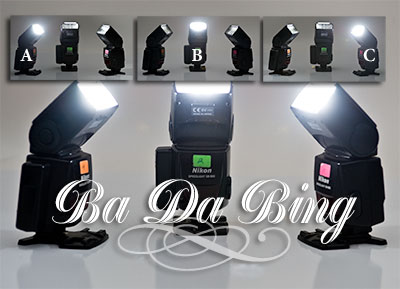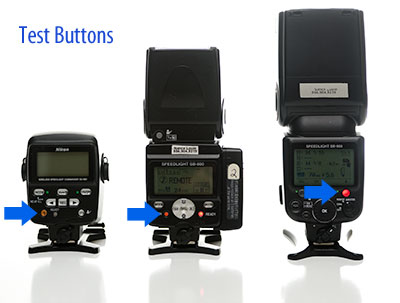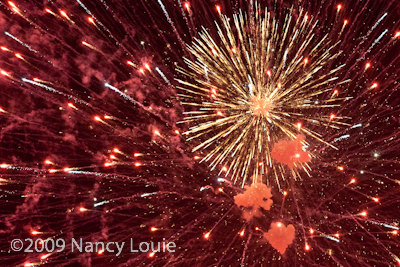Less is more
One of the more challenging things about using Nikon speedlights is that there are few buttons. It does streamline the unit and keep it smaller. Can you imagine if there were a zillion buttons on a huge hulking panel on your speedlight? With fewer buttons, you do end up with pushing them in sequences. It’s like those $7 digital watches with two buttons for setting 25 functions. They are benevolent to give you a 2 inch piece of paper with 4 point type to explain with icons? You’ll figure it out eventually. Or not!
Just a button or few—simplicity
There is a modeling button on the back just where the neck of the speedlight bends. It makes a nice buzzing sound that makes one think that there’s something wrong with the unit. With more and more shooters shooting digital today, it’s just easier to do test shots and chimp to see where those bad shadows find their way into the scene.
Ah, but those little red buttons can help you!
Nikon put that little red test flash button on the back of their speedlights and also on the back of the SU800 Commander unit (technically, orange button). The button allows you to “test” to see if the unit is working. I use it after I load batteries into a speedlight and want to see if I’ve loaded them correctly. Exempt the SU800 because there is no light in it since it’s just a control unit.
Sequential Fun
At most shoots, there’s always a lot going on. Chaos with a dull roar. You might be shooting with multiple speedlight set ups. Try two, three or four. You’ve mounted them and got ’em where you think you want them, channel is set, group assigned. You want to do your test shots, adjust power…
But then… you FORGOT which one you set up in which group? If you’re controlling them with a master on board speedlight or an SU800 controller it’s easy. Ask them to tell you the group you assigned to them!

How?
Press that test flash button on the back! Presto, BA DA BING.
They will fire in sequence of the group you assigned to them. A, B, C. Right in sweet orderly little solos. Ba Da Bing, we sing. Take notes! You tested them for opera singing, no?
This second image shows you where the magic button lives on an SU800 Controller, SB800 and SB900:

Tony Soprano would be very proud, and he doesn’t sing opera. Actually, Bada Bing was added to the 2003 Oxford English Dictionary due to it becoming such a popular colloquial phrase to mean: an exclamation to emphasize that something will happen “effortlessly and predictably.” One push of your test button and mystery solved effortlessly.
It’s also good to test them before you start shooting to make sure they are communicating properly. That’s what I tell people instead of letting them know that I have absentmindedly forgotten the speedlight group assignment arrangement.
Watch them sing when you press the button. If your models question why you’re muttering, “Ba Da Bing,” tell ’em nan from Jersey sent ya.
Read Full Post »




